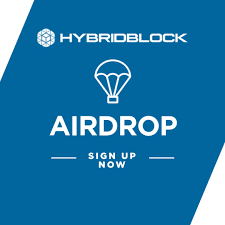How Do Byteball Airdrops Work?
.jpg)
The Byteball Airdrop: What You Need To Know
Update Feb 21st, 2018: This airdrop has been cancelled. To learn more, please read this thread on Bitcoin Talk.
Byteball is a Directed Acyclic Graph, or DAG-based, cryptocurrency network that was created by Anton Churyumov. It was designed to be an ideal option for use in smart, simple, and secure contracts—particularly because DAG-based cryptocurrencies remove the need for “blocks” that constitute blockchains. This is a particularly effective way to surpass the scalability limits that typically affect blockchain-based currencies. With Byteball, transactions are connected directly, rather than in blocks, allowing them to reference one or more previous transactions for verification. This speeds up transactions and keeps the system operating smoothly, even at massive scales.

Byteball has two native currencies, bytes and blackbytes, but users can also instantly create their own currencies using the platform. In the sections below, you will discover how the core currencies are generated and distributed, how they interact with another, and how you can earn bytes for free through Byteball airdrops.
The Byteball airdrop starts from the first Bitcoin block generated after every full moon. At the full moon, a snapshot of the the Byteball network is taken. This snapshot records which Byteball addresses will receive free bytes during the airdrop. 12 hours after the snapshot, the distribution of bytes will start. However, users should know that airdrops may be cancelled in any month based on the overall circumstances of Byteball’s recent performance.
How Do You Get Started With Byteball Airdrops?
Put simply, there are three basic requirements for participating in the Byteball airdrops:
Acquire a Bitcoin (or Byte) balance.
Install a Byteball wallet.
Install another cryptocurrency wallet that can be connected to Byteball.
Once a person who is interested in using Byteball has these steps taken care of, they are qualified to start earning bytes for free.
Electrum, Trezor, Nano Ledger S, and Mycelium are the suggested (free) Bitcoin wallets for verifying Bitcoin balances with Byteball. After storing your Bitcoin in one of these wallets and creating a Byteball wallet, you will need to interact with the Transition Bot to prove ownership of your bitcoins.
The Transition Bot
n order to participate in the next distribution round of the Byteball airdrop, you will need to chat with the Transition Bot via your Byteball wallet. You can open the Transition Bot by following the first link featured under the “After installing a wallet” section on this page.
Once you have successfully opened the Transition Bot, it will ask that you send it your Byteball address. After this, you will need to prove ownership of your Bitcoin address using one of two verification methods:
The Transaction Method – Send a micropayment from your Bitcoin address to the Transition Bot as verification of ownership.
Or
The Signature Method – Sign a message using your Bitcoin wallet’s private key.
Enter your Byteball wallet and copy your Byteball address.
To sign a message, enter the menu of your Bitcoin wallet.
Click the “sign a message” button.
Paste your Byteball address into the message field.
Paste your Bitcoin address into “address” field.
Then click “sign”.
Doing this should generate a signature, which can then be copied and pasted into the Transition Bot.
In order to verify a Bitcoin address, it is not necessary to have any bitcoins in your wallet. In fact, the Bot only needs you to sign and verify the address with the correct key (fractional amounts of Bitcoin are acceptable as well).
Limitations For the Transition Bot
Bitcoins that are currently held on an exchange are sometimes not able to be verified via the Transition Bot.
Besides that limitation, the signing process is also limited for users who wish to sign a P2SH (Pay-to-script hash) Bitcoin address rather than a P2PKH (Pay-to-Pubkey Hash) Bitcoin address—P2SH would be any Bitcoin address that begins with a 3, while P2PKH addresses would start with a 1. In order to link a P2SH address, users will need to use the transaction method.
This issue is technically not an issue with Byteball, but is instead caused by the Bitcoin network architecture.
Can You Use Multiple Bitcoin Addresses For Byteball Airdrops?
Yes—but, you cannot link more than one Byteball address to a single Bitcoin address. If you use the signing method to link the wallets, only the most recently added Byteball address will still remain active. But if you attempt to use the transaction method to link and verify more than one Byteball address to a single Bitcoin address, both will be deactivated.

Although some users may prefer to connect each of their separate Bitcoin wallets, it may be simpler and more efficient to consolidate all their bitcoins into a single wallet and connect that one to their Byteball address. Otherwise, they will need to repeat the verification process for each of their Bitcoin addresses.
How Many Byteball Currency Tokens Currently Exist?
As Byteball is a DAG-based platform, it does not rely on miners to verify transactions in order to generate its currency units. Instead, all of them were created at Byteball’s inception. The total amount of each token that was generated are:
bytes – 1,000,000,000,000,000 (10^15)
blackbytes – 2,111,100,000,000,000 (2.1111*10^15)
As of the writing of this article, 10 rounds of Byteball airdrops have occurred, and 65% of the total currency has been distributed.
How Many Bytes or Blackbytes Can I Earn Via Airdrops?
For the next Byteball Airdrop, linked users can expect to earn the following amounts:
For every 1 BTC you own, airdrops will give you 6.25 million bytes.
For every 1 BTC you own, you will receive 2.1111*6.25 million blackbytes.
For every 10 bytes on a Byteball address, you will earn 1 free Byte.
For every Byte on a Byteball address that is linked to a Bitcoin wallet, you will earn 2.1111 free blackbytes.
Keep Your Coins Stashed Before Airdrops
Sometimes the distribution process of a Byteball airdrop can take weeks, with the largest portions being distributed first and the smaller portions delivered afterwards. Therefore, it is important to note that if you perform a transaction using any of your balances prior to the airdrop completion, the airdrop you receive will reflect the current balance of your wallets. As long as any balances that have been moved are returned to the account before the airdrop starts, the full amount of free bytes should be delivered.
Pro tip: The Transition Bot can be used to stay up-to-date on your current linked balances for your bitcoins and bytes. As long as the Bot is up and running, you can ask it to display these balances by saying “hi” in the message box. These values can also be checked using these links: transition.byteball.org (check Bitcoin balance) and explorer.byteball.org (check Byteball address balance).
Troubleshooting Byteball Airdrops
If you notice that your Byteball Airdrop has not granted you the full amount of bytes that you should have received, troubleshooting the issue yourself is an option.
Typically, users must ensure that they have the latest version of the wallet installed, and that they fully comprehend exactly how airdrops are supposed to function. Then they need to check their linked Bitcoin or Byteball balance using any of the previously described methods.
If these don’t answer your questions, then you may need to check the time and date of any transactions made using your linked wallets. It is often the case that users assume that the snapshot has been taken and the airdrop has begun, when in fact it has not. If your balance was altered before the airdrop, you may have missed out on some bytes.
Don’t Miss Out On These Free Byte Tokens
Although this method has proven itself capable of attracting a sizable initial user base, Byteball has determined that airdrops are a cost-inefficient user acquisition method. To remedy this, they have begun developing more effective, but equally engaging, methods of attracting new users to their platform. For the time being, Byteball plans to offer airdrops into the foreseeable future. But prospective users should be aware that this feature could be repealed at any point and replaced with a more efficient system.
So what does that mean to you?
I’d say that if you have bitcoins stored anywhere, now is likely the best time to link them to Byteball and start earning free bytes via Byteball airdrops.
Especially because, in the future, Byteball’s network should allow users to set up effectively risk-free conditional transactions. With conditional payments, a payee would only receive a payment once they have completely fulfilled their contractual obligation. If they fail to do so, you keep your money.
This will make Byteball highly valuable in industries like gambling and insurance. For example, if you wish to place a bet on a sports team, the contract can be set up to automatically pay out once the score is finalized, ensuring that you get your winnings without any hassle. But of course this is only the tip of the iceberg for Byteball’s functionality.
As Byteball’s native currencies see more widespread use, its value as a smart payment platform will grow as well—and so will the inherent value of any bytes that are in your possession.
For more information about Byteball, you can check out some of these useful resources:
Byteball Official Website
Byteball Subreddit
Byteball Official Whitepaper
Hi! I am a robot. I just upvoted you! I found similar content that readers might be interested in:
https://www.investinblockchain.com/byteball-airdrop/